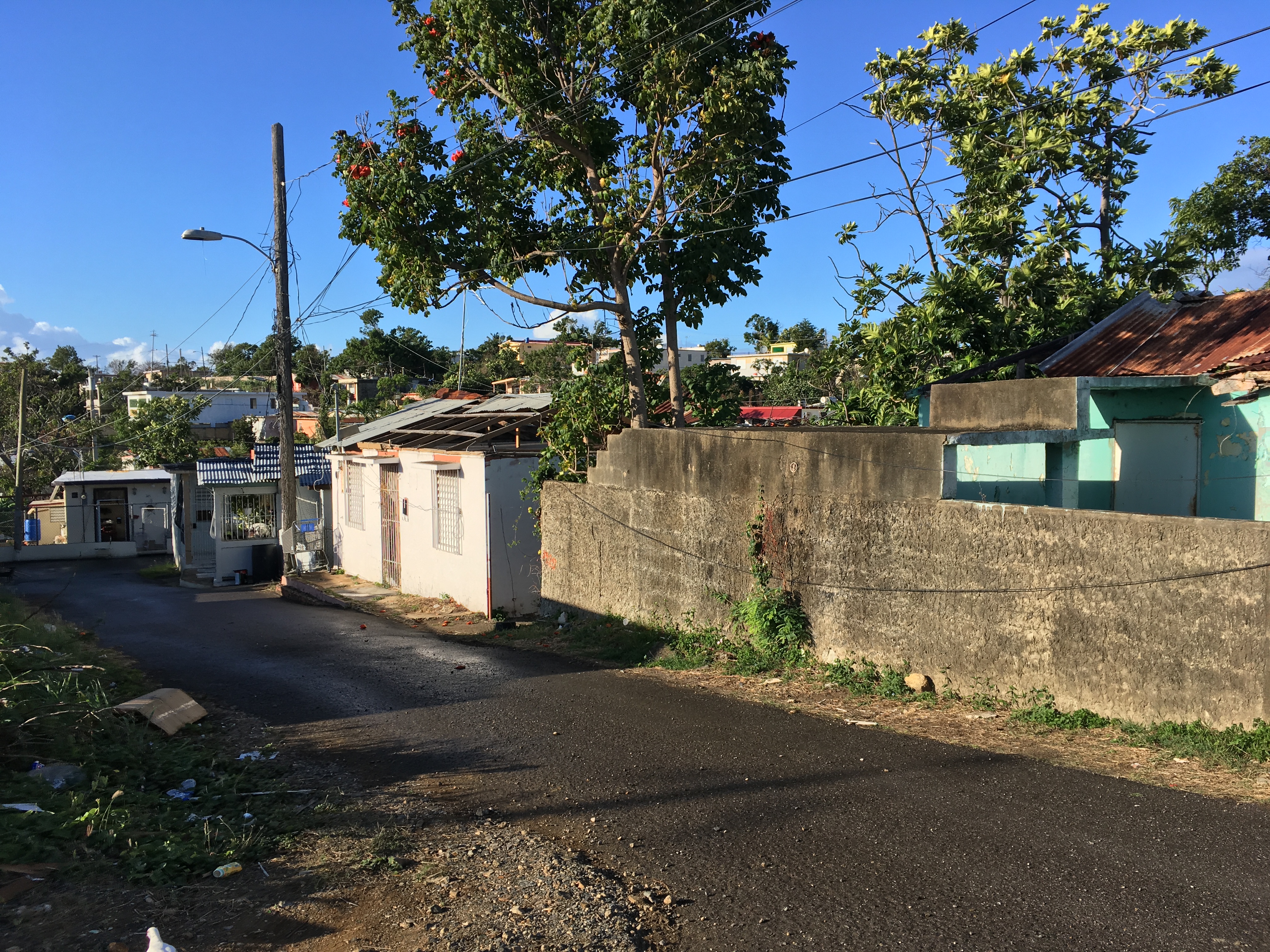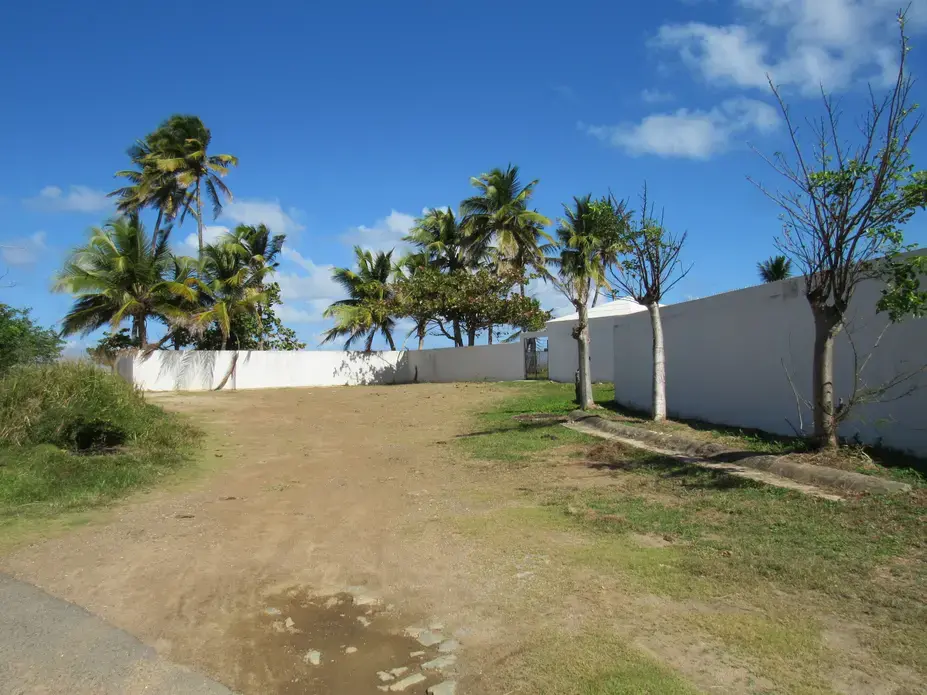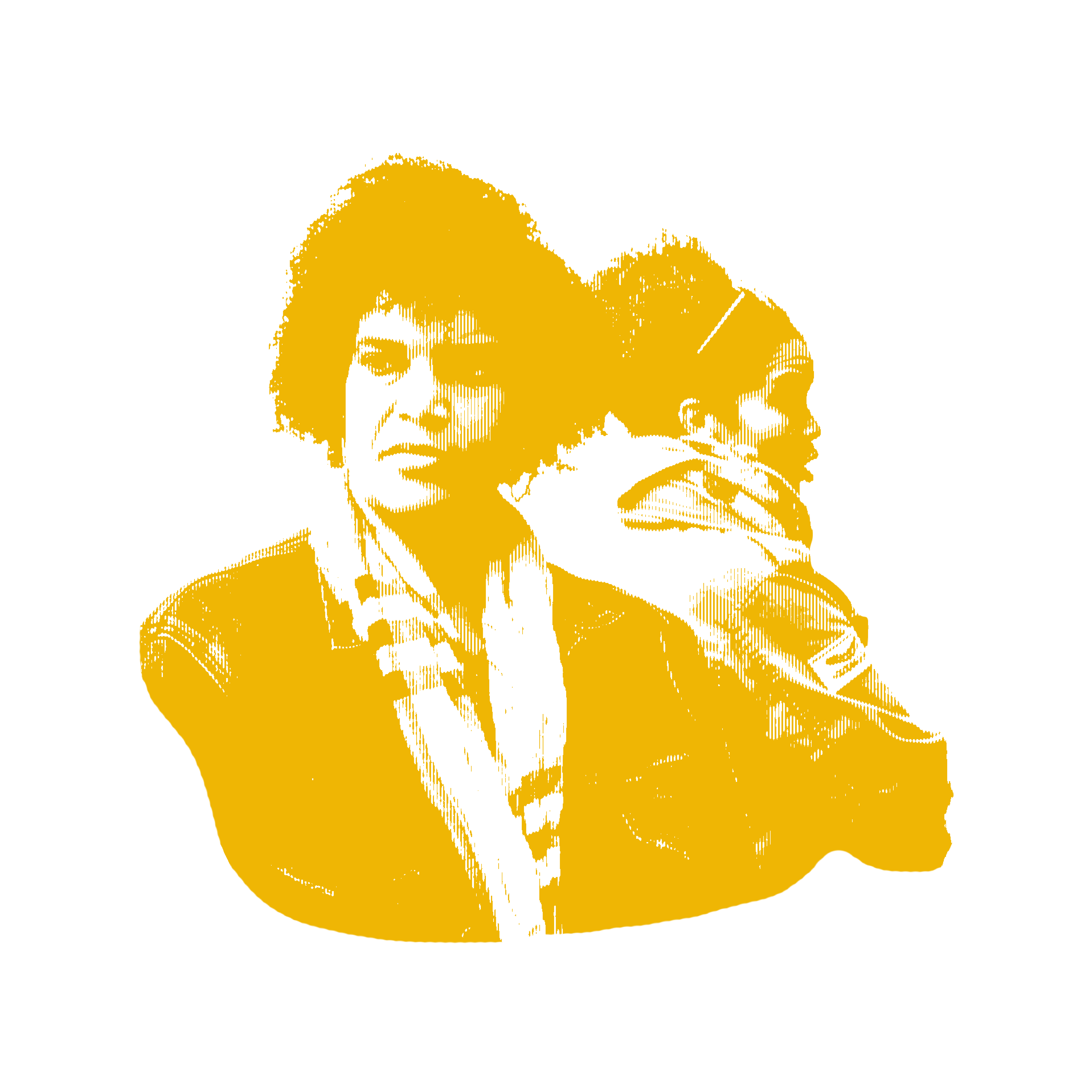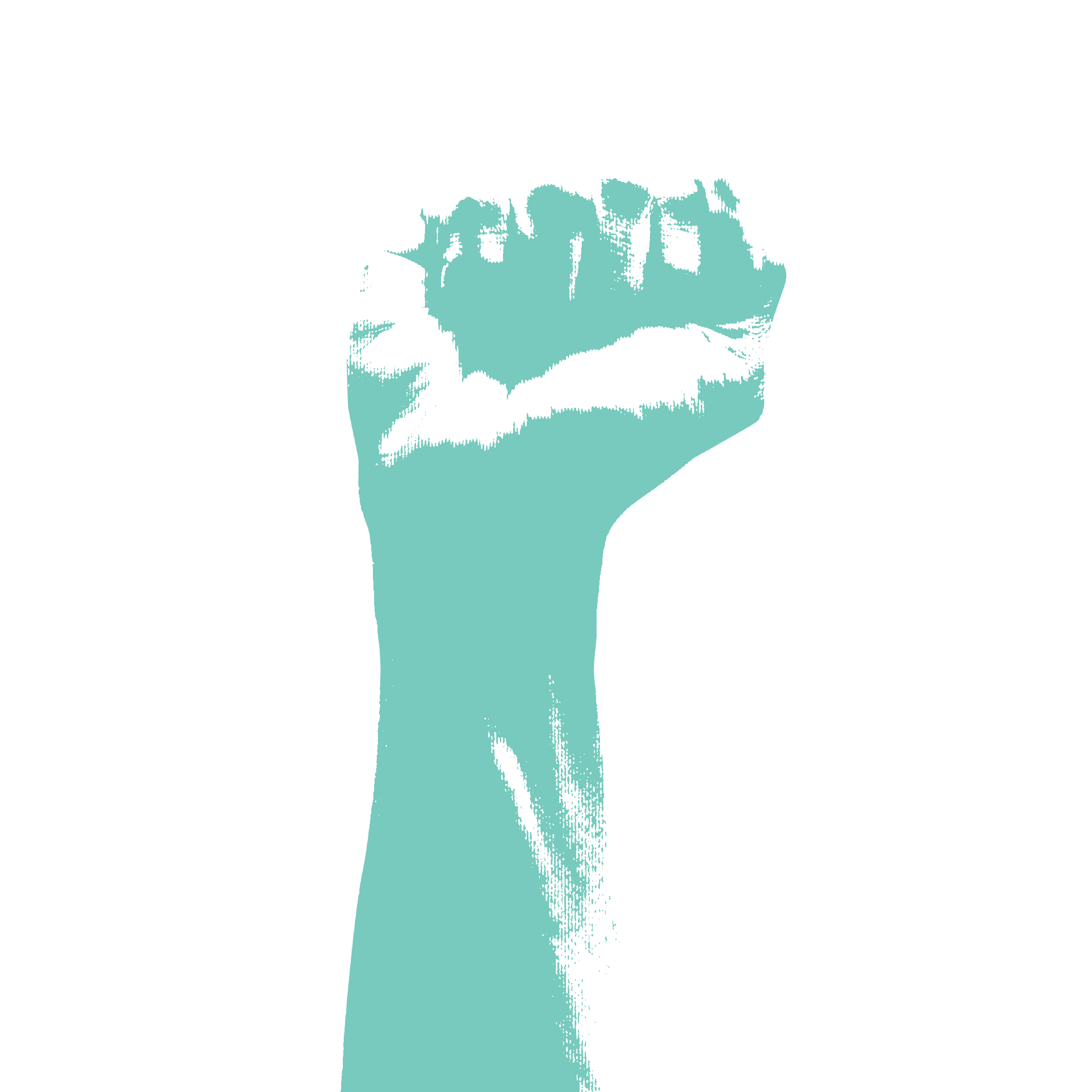At the end of the road in the community of Tocones in Loiza, Puerto Rico, the waves gently crash against the coast. Overlooking the beach, flanked by condominium developments, is an empty lot. It's an unremarkable space, defined by nothing but the wall of the adjacent Costamar Beach Village. Accompanying us down the road to see this land is local artist Samuel Lind. The only things living on the vacant land are scrubby grass and a few small trees. But this lot is a memorial, reminding loiceños of a 38-year-old tragedy: the killing of Adolfina Villanueva Osorio.
On the morning of February 6, 1980, Villanueva Osorio, a 34-year-old mother of six, was shot to death by Puerto Rican police officers who were trying to evict her from her land.
According to a report by the newspaper El Vocero at the time, the Catholic Church had hoped to acquire the property where Villanueva's home stood. The proposed purpose was to build a summer home for the Archbishop of San Juan, Cardinal Luis Aponte Martínez. But Villanueva Osorio and her husband, Agustín Carrasquillo Pinet, refused to move the family from their home.
El Horizonte, a now-defunct Puerto Rican newspaper, reports in detail what occurred that day in February. Villanueva Osorio was at home with two of her children; the other four children were at school.
The family was poor, but they had what they needed from fishing and from farming yucca, papaya, and gandules. The couple had inherited the land they lived on from Villanueva's father, whose ancestors had occupied the area for a century.
That morning Carrasquillo Pinet, a fisherman, woke up early to go fish for crabs in Vega Baja. He sat on the porch and saw dark clouds rolling in on the horizon. He decided not to leave for work that day.
As he sat on the porch he noticed police running up the beach. His first thought was that a robbery had taken place in his neighbor's house. Suddenly he realized the police were surrounding their home. At that moment his wife came out to see what the commotion was.
"They knocked down the gate and started firing from the beach to the inside of the house," El Horizonte quotes him as saying. "They locked us in. They started throwing smoke bombs, and when my wife threw herself on me, a police officer came and shot her."
The police claimed that Villanueva Osorio was brandishing a machete. According to Carrasquillo Pinet's account, those were false rumors and she was never holding a machete.
No one was ever prosecuted for her murder.
Thirty-eight years later, Villanueva Osorio's story still haunts the community. Even after three decades Lind says he gets goosebumps when telling the story of "doña Adolfina," as he calls her—and as we stood on her land with Lind, listening to his story, a rainbow appeared. Over a week in Puerto Rico we heard versions of her story from multiple sources in Tocones and in San Juan; it was brought up every time we mentioned we were working on a story about property rights in Loiza. Her story has become a cautionary tale, warning of what can happen when powerful entities try to take your land.
According to Lind, Villanueva Osorio's death caused the community to rise up against injustice.
When the building of the Cardinal's house began, he says, people would come at night and dismantle the work the builders had done that day. According to Lind this act of resistance happened every night, until eventually the builders gave up. There is no official record of this happening, only the oral history. But since then nothing has been built on the land. The surrounding condominium complexes were constructed in the late 80s and early 90s.
Loiza
The city of Loiza and the neighboring community of Piñones are the heart of Puerto Rico's Afro-Caribbean community. The birthplace of bomba and plena, the area is rich in Taino and Black history. The name of the town is thought to have come from a female Taino chief, Yuiza.
That history is not only inherited through music, art, and dance but also in how loiceños relate to their land.
"Loiza has existed long before the Commonwealth of Puerto Rico," says local activist Maricruz Rivera Clemente, founder of the cultural center Corporacion Piñones se Integra, or COPI. Through her artistic and educational work with the community, Rivera Clemente tells the history of Loiza to young loiceños, tourists, and visitors alike.
Under Spanish colonial rule in the 1600s, a crown decree from Spain instructed that captured runaway slaves be sent to the area that is now Loiza. Many of the current loiceños can trace their family history back to that colonial decree and earlier. And the unusual structure of Puerto Rican property rights as well goes back to when Puerto Rico was under Spanish rule and the fight for freedom from the Spanish crown.
Land in Loiza has passed down from generation to generation. As Rivera Clemente explained to us, "Let's say my sister and I own land and I have a house, I can tell my sister to build her house next to my house since it's our land." There are many plots of land like this in Loiza. Siblings build multiple homes on the same inherited plot. What makes Puerto Rico, and by default Loiza, unique is that many people don't have formal titles to their land.
After Hurricane Maria this issue caused a lot of trouble. Without proof of ownership many homeowners were not able to receive federal aid. In order to address this dilemma the Federal Emergency Management Agency (FEMA) eventually allowed homeowners to work with lawyers and bring in affidavits as proof of home ownership.
In Loiza the pressure to obtain a title or deed is tearing parts of the community apart. As Rivera Clemente explained, when an outside assessor comes in, they often divide the land. "In the example I set, if my sister has her land assessed for a title, she may find out her land ends inside my kitchen. Pressuring loiceños to divide their land for titles is pitting siblings against each other."
But for some the lack of a title has actually proven to be a protection.
In communities like El Caño Martin Peña, a longstanding informal settlement adjacent to San Juan's financial district, the absence of formal deeds to the land has encouraged community leaders to organize as a community land trust. Under the land trust, individuals own rights to their homes, but the land below is owned collectively, with restrictions placed on how much its value can appreciate. Thus, the neighborhood is protected from speculators with designs on what could be valuable real estate on the open market.
Loiza and Piñones are due east of the metropolitan areas of Santurce — a district in San Juan, and the neighboring city of Carolina. As those areas have developed, Loiza has remained relatively untouched. Its white sandy beaches are postcard perfect; along the main coastal road kiosks selling traditional pinchos and other snacks are a popular tourist attraction.
To the west of Piñones are the high-rise hotels of Isla Verde; to the east of Loiza sits the luxury St. Regis resort, still closed after Hurricane Maria. But Loiza and Piñones themselves remain quite poor.
In Loiza, the median household income is $17,273. Fifty-three percent of the population lives below the federal poverty line. According to the U.S. Census, it is a municipality that is majority Black with 64.3 percent of the population identifying as such.
Although many people in this area live below the federal poverty line, 82.3 percent of the houses in Loiza are owned by the families or individuals who live there and only 5.7 percent of those homes are seasonal or recreational rentals. So while the people of Loiza generally own their homes and can't be forced out by rising rents, like many low-income Americans, their homes are nonetheless threatened by both environmental and economic forces.
Continuing our path along the beach near Adolfina's land, waves gently wash our feet. We quickly reach the next community over, Parcelas Suarez.
The entire coast here is considered a flood zone, and erosion is only making it worse. This past fall Congress approved an allocation of $5 million to the Army Corps of Engineers to help stop coastal erosion in Parcelas Suarez.
As we walked along the coast taking pictures we saw a large, abandoned structure. We weren't sure what it was so we approached a group of men sitting nearby. That is when we met Chucho* a fisherman who spent some years living in the United States but returned home to Loiza to retire.
He explained that the abandoned building was once a community center where people could dance on weekends, eat, and throw parties. The erosion and rising tide caused the place to close down. "She's pissed," Chucho says of the ocean.
The waves crash over the natural wall. In the past water would not go over this wall, locals say; now, the ocean engulfs it.
The Loiza/Piñones community is tight-knit. Most everybody seems to know each other and the history of the area. They have suffered storms and racial injustice together. Now they worry the ocean will swallow their community, and efforts to shore it up won't happen quickly enough.
Our first trip in our investigation mapping vulnerable areas and looking at property rights reminded us that property is not just a building or a parcel of land. It is a family, history, and a relationship to the land over time.
Loiceños today, like Adolfina Villanueva Osorio decades ago, say they will fight whatever forces try to take away their property and all it signifies—whether that threat is rising seas and storms driven by climate change or developers seeking beachfront property or other threats be they natural or human.




















